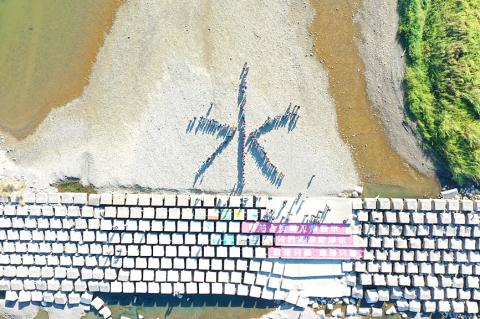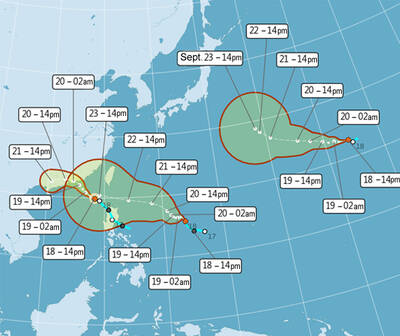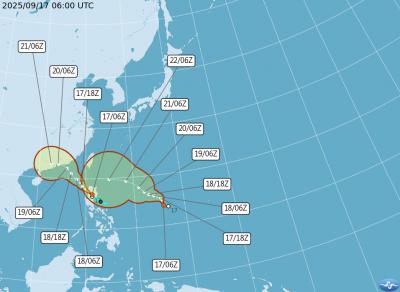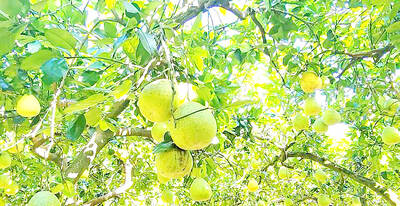A group of about 300 protesters yesterday gathered at “tofu rocks” along Hsinchu County’s Toucian River (頭前溪) to demand clean drinking water for the county’s residents.
The protesters stood on the riverbank to form the Chinese character for the word “water” (水, shui), and captured the scene using a drone.
A group of local environmental activists tested water and demonstrated the effects of water-borne parasites on water quality.

Photo provided by the Society of Wilderness’ Hsinchu Qinzi Group
Event organizers invited local politicians from across party lines to participate, saying that water quality was everyone’s concern.
“We refuse to drink wastewater. The government must amend the Water Pollution Control Act [水污染防治法],” the organizers said, adding that water sources for drinking and irrigation must be clearly separated from factory and sewage runoffs.
The group chose yesterday for the protest in the hopes that with elections only a month away, politicians would be willing to promise to improve water quality, they said.
“Toucian River supplies water to 750,000 people, but as soon as winter arrives, water levels drop. One-fourth of the water that remains is wastewater,” they said.
The river supplies 200,000 tonnes of water daily to the Longen weir (隆恩堰) downstream from tofu rocks, but further upstream 25,000 tonnes of wastewater is pumped into the river every day, they said.
The ratio of wastewater increases in the winter when water levels fall, they added.
The organizers and other local activists had been for two-and-a-half years calling on the government to install a wastewater pipe for industrial runoff, but officials had insisted water quality was not a problem, they said.
Establishing a water treatment facility and installing a wastewater pipe would be in the interests of local residents and industry, which would be spared from protests, they said.
“If they pipe out the wastewater to an off-site water-treatment facility it would make management of the river easier, and would take the pressure off the government,” they said.

PEAK MONTHS: Data showed that on average 25 to 27 typhoons formed in the Pacific and South China seas annually, with about four forming per month in July and October One of three tropical depressions in the Pacific strengthened into a typhoon yesterday afternoon, while two others are expected to become typhoons by today, Central Weather Administration (CWA) forecaster Lee Ming-hsiang (李名翔) said yesterday. The outer circulation of Tropical Depression No. 20, now Typhoon Mitag, has brought light rain to Hualien, Taitung and areas in the south, Lee said, adding that as of 2pm yesterday, Mitag was moving west-northwest at 16kph, but is not expected to directly affect Taiwan. It was possible that Tropical Depression No. 21 would become a typhoon as soon as last night, he said. It was moving in a

A Taiwanese academic yesterday said that Chinese Ambassador to Denmark Wang Xuefeng (王雪峰) disrespected Denmark and Japan when he earlier this year allegedly asked Japan’s embassy to make Taiwan’s representatives leave an event in Copenhagen. The Danish-language Berlingske on Sunday reported the incident in an article with the headline “The emperor’s birthday ended in drama in Copenhagen: More conflict may be on the way between Denmark and China.” It said that on Feb. 26, the Japanese embassy in Denmark held an event for Japanese Emperor Naruhito’s birthday, with about 200 guests in attendance, including representatives from Taiwan. After addressing the Japanese hosts, Wang

One of two tropical depressions that formed offshore this morning could turn into a moderate typhoon by the weekend, the Central Weather Administration (CWA) said today. Tropical Depression No. 21 formed at 8am about 1,850km off the southeast coast, CWA forecaster Lee Meng-hsuan (李孟軒) said. It is expected to move in a northwesterly direction as it continues building momentum, possibly intensifying into Typhoon Mitag this weekend, she added. The radius of the storm is expected to reach almost 200km, she said. It is expected to approach southeast of Taiwan on Monday and pass through the Bashi Channel between Tuesday and Wednesday,

NEW AGREEMENT: Malaysia approved imports last year after nearly two years of negotiations and inspections to meet quarantine requirements, officials said Up to 3.6 tonnes of pomeloes from Taiwan cleared Malaysian customs on Friday, in the first shipment of Taiwanese pomeloes to Malaysia. Taiwan-grown pomeloes are popular in domestic and overseas markets for their tender and juicy taste, the Ministry of Agriculture’s Animal and Plant Health Inspection Agency said. The fruit is already exported to Japan, Canada, Hong Kong, Singapore and the Philippines, it added. The agency began applying for access to the Malaysian market in 2023, compiling data on climate suitability, pests and diseases, and post-harvest handling, while also engaging in nearly two years of negotiations with Malaysian authorities and submitting supplementary